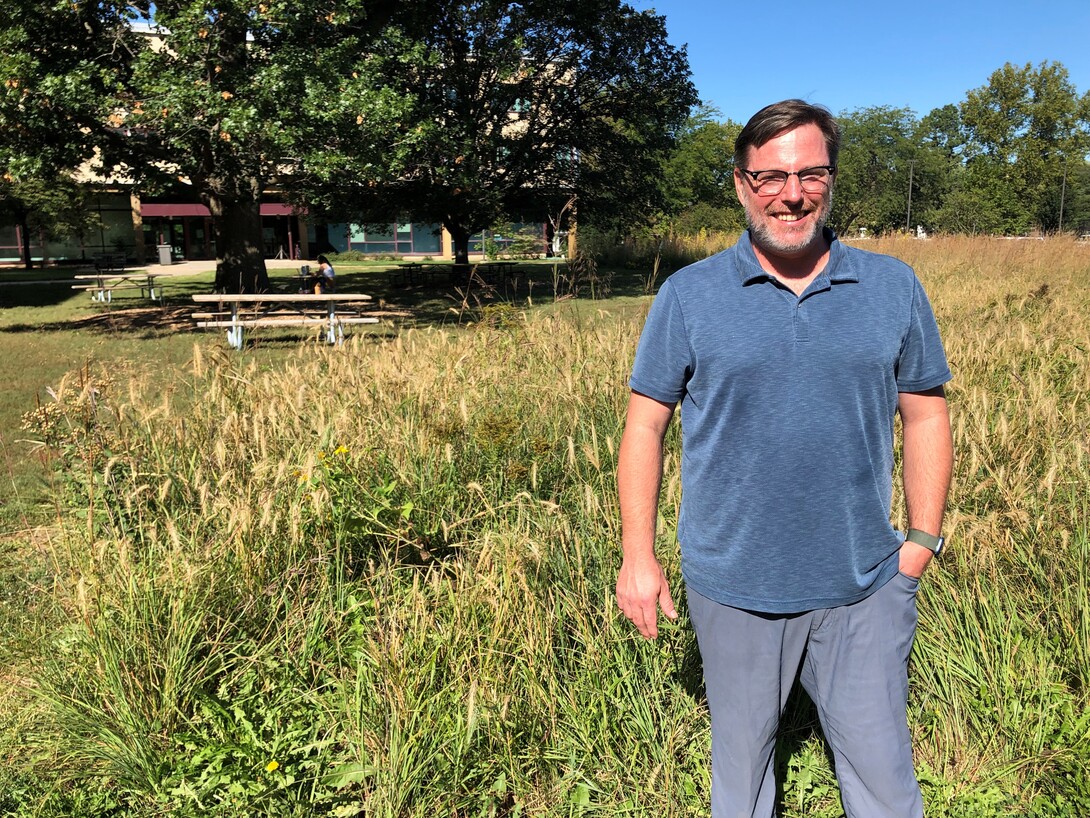
Lincoln, Neb. —Human dimensions is a growing field in wildlife and land management, and specialists in it face many challenges, Christopher Chizinski, human dimensions professor, told NRT students recently.
While specialists typically have knowledge in the social sciences that can help tease apart concerns in the triangular relationship of humans, land, and plants and animals, they often are alone in that work, Chizinski said.
“There's one person to handle all the human dimensions needs, and there's often the expectation that this person can excel in economics, sociology and psychology and have all the tools in that in studying people,” he said.
Human dimensions specialists rely heavily on surveys in their work, but Chizinski said quantitative surveys focusing on numbers can miss important nuances more likely to be picked up by qualitative surveys collecting stories and themes from people through questions.
In a recent study on wolf reintroduction, for example, Chizinski said qualitative findings indicated opinions on wolf reintroduction aligned with political party memberships.
“Just hearing ‘wolf reintroduction’ automatically makes a segment of people oppose it because it aligns with the opposite political party and all of those kinds of things,” he said. “It has very little to do with the actual potential of the wolf in the ecosystem. There is concern about safety and predation, but it's the symbol of the wolf and the perception of the federal government pushing its views on the public that have really caused that to become a problem.”
Human dimensions specialists want to manage wildlife based on science, he said, but can be drawn into political controversies as they work with the general public.
“So many of these decisions also have political consequences, and oftentimes, the politicalness from either side can get in the way on those things,” he said. “So, trying to balance all of those things, or at least assess the social sciences in light of politics, can be tricky.”
Still, he said governmental agencies increasingly recognize the importance of managing collaboratively.
“It's not just a top-down where they're making the decisions and pushing it down,” he said. “They’re realizing that they need to engage their stakeholders, listen to them and incorporate their views into management decisions.”
These stakeholders may not be local, as in the case of hunters. For example, Nebraska attracts about as many nonresidents as residents in hunting turkeys, Chizinski said. State agencies are expected to manage their wildlife populations, but much of the budget they rely on to do so may come from sales of permits to nonresidents.
These nonresident stakeholders can add to the challenge of engaging the public in making decisions.
“How do we get this balance where we keep residents happy yet allow nonresidents, because the thing in the hunting and fishing world is that nonresidents pay a big chunk of the budget,” he said.
In Nebraska, much land is also privately owned, so governmental agencies need to work with landowners to manage wildlife, invasive species and other concerns. Typically, a human dimensions specialist will reach out to landowners to get an idea of how they feel about those concerns and possible regulations.
“Fish and wildlife management is much easier when the land is owned by the federal government and the federal government can make a rule and then it gets to happen,” Chizinski said.
In the past five to six years, human dimensions specialists and agencies have also strived harder to work with tribal nations on managing land and wildlife, Chizinski said.
“There has been a greater expansive view of recognizing that not all cultures look at land the same way, from a consumptive or a diminutive type of approach, that there are other views and practices out there,” he said.
One recent project he has been working on with a couple of tribes involves deer. Deer populations have been ravaged by chronic wasting disease, which is similar to mad cow disease in cattle, Creutzfeldt-Jakob disease in humans and scrapie in sheep. The disease is zoonotic, meaning it can transfer from one animal species to another. Chizinski said that some tribes eat the brains of deer and that scientists are concerned about the disease spreading to people.
“With a lot of zoonotic diseases, there is a fear that it's just a matter of times people do that before something like that happens,” he said.
He and a governmental agency are striving to work with the tribes to “understand the situation and what's going on there, and maybe what are some solutions and how can we learn from each other,” he said.
Chizinski advised NRT students interested in human dimensions work to take training in qualitative methods, which is available through the university as a Mixed Methods Research graduate certificate (https://graduate.unl.edu/academics/programs/MMRS-GCER).
“There are things that just can't get teased out in surveys that are strictly quantitative,” he said. “I wish I had had more training in the qualitative side of things. Now the benefit for our students is that UNL has a great qualitative program and great qualitative classes.”







